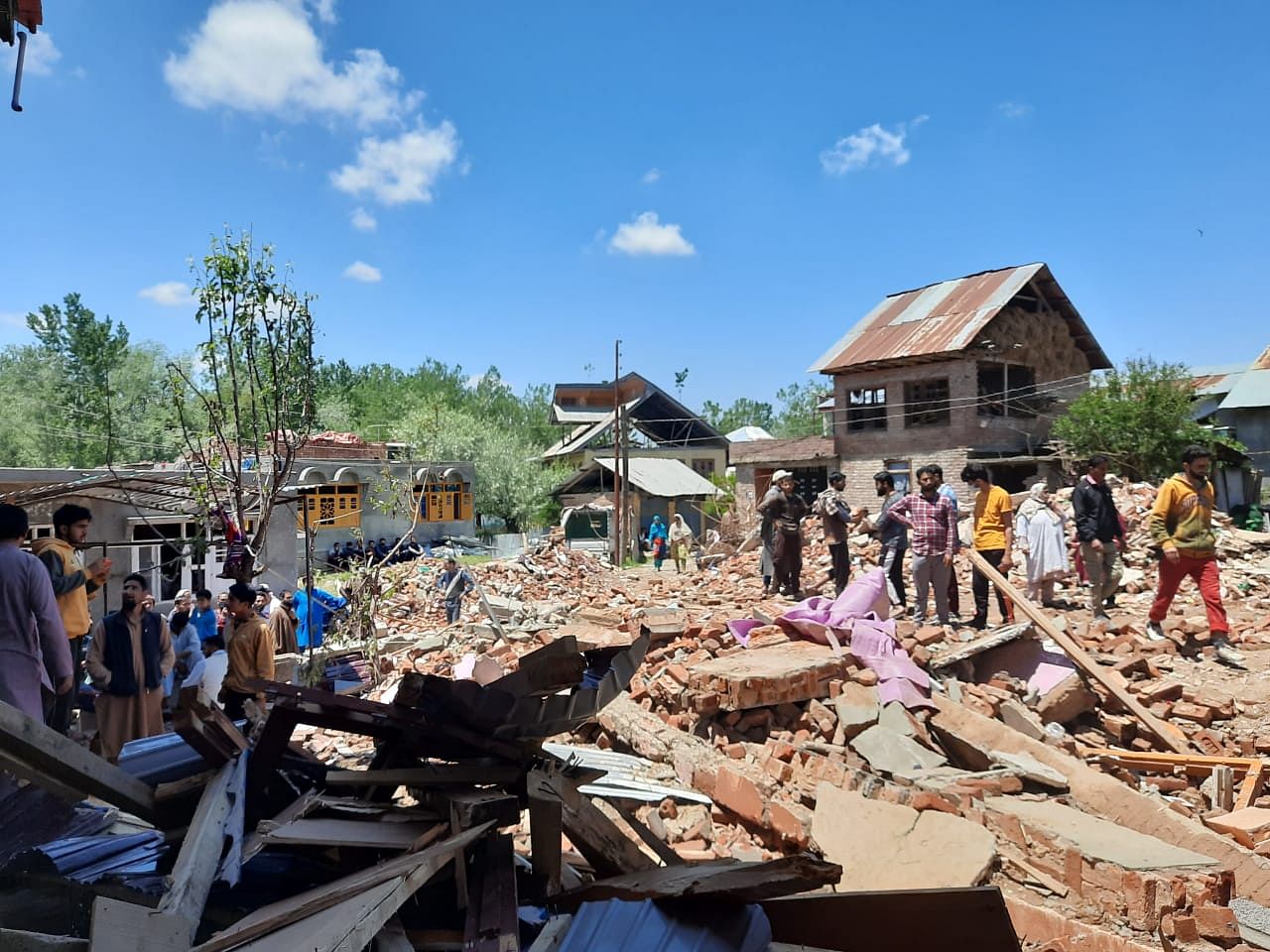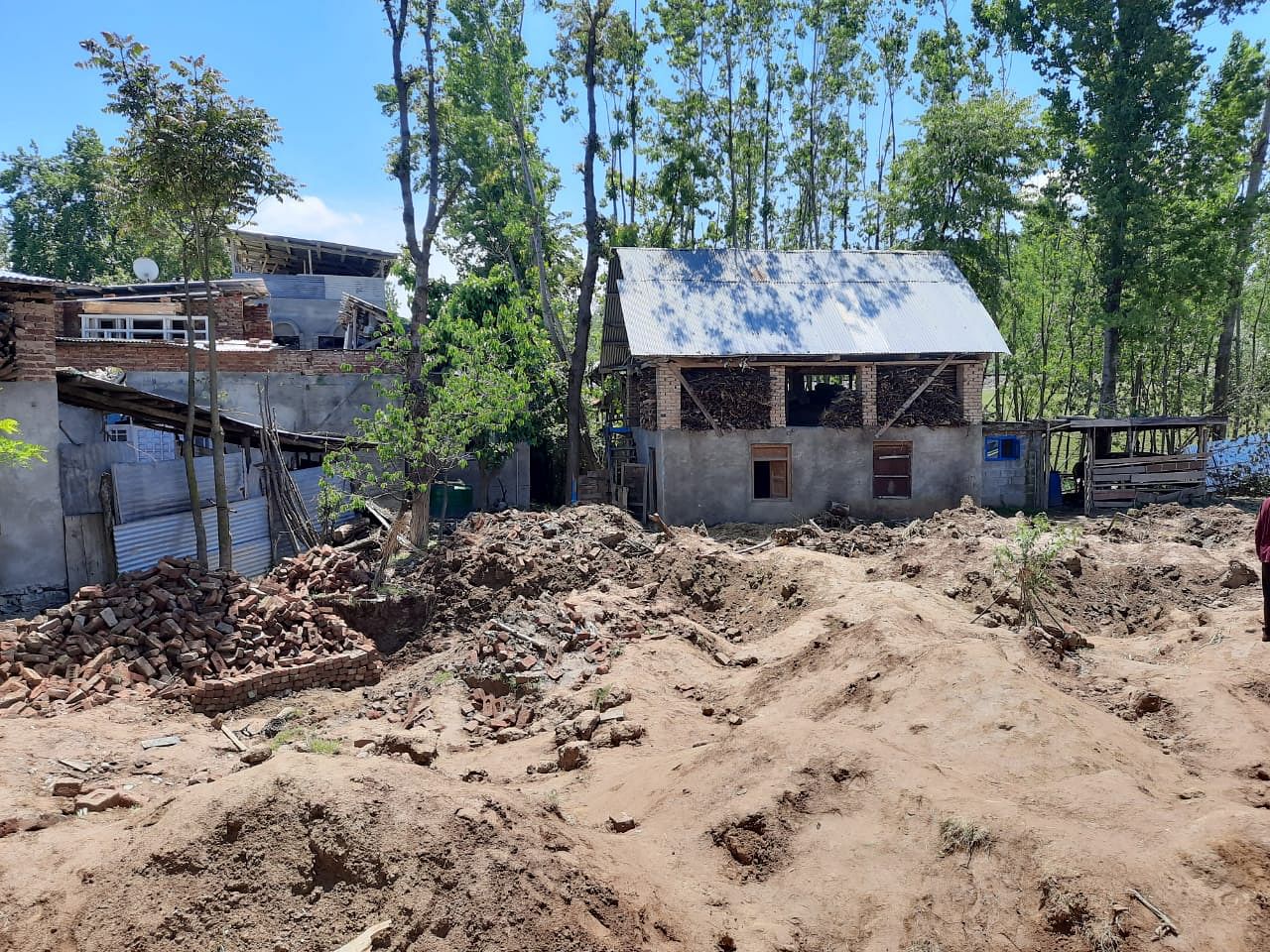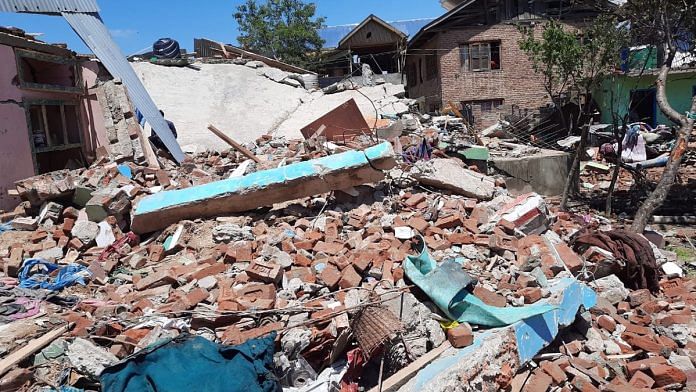Beighpora: When security forces landed at Beighpora village — where Hizbul Mujahideen’s top commander Riyaz Naikoo lived — around 10 pm on 4 May, local residents thought it was just another “routine” operation.
“We thought it was a routine check as the Army had been coming and checking our village at least two to three times a month,” said Mohammad Rafiq, head of the village auqaf, a resident welfare body. “They had, however, been digging up land from almost a month ago particularly around the railway track. We assumed the Army was looking for trenches used by militants.”
But it soon became apparent that this was no ordinary cordon and search operation (CASO) in this village in south Kashmir’s Pulwama region.
The security personnel, comprising the Army, the Central Reserve Police Force (CRPF) and the Jammu and Kashmir Police’s Special Operations Group (SOG), had cordoned off the entire village cutting off all exit points.
The teams of Army men and the SOG then gathered around 10-15 youths and began searching the village. Residents said another set of teams brought in excavators to dig up the vegetable gardens, a major food source for the village.
The digging would continue for the next 24 hours before Naikoo’s location was finally narrowed down to one home, where he was holed up with another militant.
Speaking to ThePrint, a top counter-insurgency officer said they had been trying to narrow down Naikoo’s location for the past few months, and had even got to know about at least seven hideouts the Hizbul commander had used in the last year.
“However, a credible input about his presence around his village came last month. Hence, the CASO,” said the officer.
The encounter began only on the morning of 6 May, a little after 8 am, but when it did, the villagers said, it took everyone by surprise.
“The firing that followed was relentless and so were the explosions. We were not even warned to leave our homes. Bullets were flying all over,” one villager said. “All three of my cows got shot in the udder. That was my only source of income, as I would sell 15 kgs of milk (every day). But many here have lost more than that.”
The nearly six-and-a-half-hour encounter that followed would mark the final stand of Naikoo, who had been a militant for nearly eight years. His aide, Adil Bhatt, was also killed.
Villagers said they returned to the encounter site after the gunfight was over, only to find rubble. At least five houses were destroyed in the encounter, while more than 10 other houses and livestock suffered damage.

The bodies of the two slain militants were taken away to be buried as opposed to handing them over to the families. This was after directions from the Centre to the J&K Police to not return the bodies as subsequent funerals, which usually see large gatherings, could become an issue during the Covid-19 pandemic.
Naikoo was buried along with his aide at a location not disclosed by the police force. Five members of his family, including Naikoo’s father Asadullah, were taken to the grave to offer prayers.
Also read: Mehbooba Mufti’s detention under Public Safety Act extended for 3 more months
South Kashmir tense, an eerie calm in Beighpora
An eerie calm has engulfed Beighpora village, days after the encounter. It is under thick security cover with forces manning all entry and exit points of roads leading to the slain militant’s residence.
Since the encounter, parts of Kashmir, particularly the south, have seen violent clashes between locals and security forces resulting in killing of at least one civilian and injuries to several others.
Forces have built a two-storey bunker at the trijunction of the new highway that leads to south Kashmir. There is also heavy deployment of forces along the highway with authorities checking vehicles and questioning passengers about their travel plans. All communication channels continue to remain blocked in vast parts of south Kashmir with internet service suspended across the Valley.
Police forces deployed in the village, led by the local station house officer (SHO), barred all vehicles, including those of the media, from even passing the road that leads to Naikoo’s home.
Ahead of the house, located near the railway track that runs through Beighpora village, lies the rubble of the destroyed homes.
“You are standing on the ruins of at least five houses. Dozen other homes were destroyed too. Those three days were as if war had been unleashed on our village,” said Rafiq, the head of the village auqaf.
Villagers also showed the dug-up kitchen gardens. “Due to the pandemic, our village would rely solely on vegetables produced by local residents,” said Nasir Ahmed, a resident of the village with a population of 450.

He added that three men from the village — Mohammad Ramzan, Mohammad Sultan and Azad Ahmed — are now in police custody.
“Mohammad Sultan’s daughter had gotten engaged recently and was supposed to get married this year. Now nothing is left of their house,” said Nasir Ahmed.
Many had gathered at Naikoo’s residence Sunday to offer condolences to his family.
Naikoo’s father Asadullah was inside the under-construction home attending to the scores of people visiting him.
“We found out about his death at 5.30 pm on Wednesday (6 May). We took permission from police to offer prayers at his grave. We broke our fast on the way and the same night at 10 pm we reached Sonmarg where Riyaz had been buried alongside other militants killed in action over the past few days,” Asadullah said.
“I thought they would bury him in front of us but he had already been buried. A woman, the mother of one of the militants, had reached the graveyard before us. She told us that she had applied henna on Riyaz and her son before they were buried. We offered our prayers and left.”
Also read: Ban on high-speed internet not proving enough to prevent rising violence in Kashmir
A most wanted militant
Naikoo, 35, who had been with the Hizbul since 2012, would have completed eight years as a militant on 31 May, making him one of the longest surviving militants.
He had begun working for Hizbul first as an overground worker on 31 May 2012, after leaving his job as a mathematics teacher.

Wanted for multiple attacks on security forces and sanctioning killing of civilians his outfit deemed to be government informers, Naikoo was considered one of the most efficient militant commanders in recent times, counter insurgency officers said.
Among his “endeavors”, one senior police officer said, was his success of reining in an internal rebellion led by former Hizbul commander Zakir Musa who wished to change his outfit’s pro-Pakistan stand and adopt a global jihad agenda. “The abductions of police officers and their families had given Naikoo a larger-than-life image,” said another officer.
Naikoo, in response to alleged harassment of a militant’s family, had orchestrated the abduction of police families in 2018. The embarrassment, many in the security setup believe, prompted the transfer of then DGP S.P. Vaid. “Riyaz might have been a better chief than his predecessors but in the end, no one is invincible,” said the officer quoted above.
Security officials, however, also predict that the escalation of violence witnessed in Kashmir over the past month may result in a hot summer. “We expect violence to increase but we believe we can manage it,” a senior police officer said.
Also read: Why Abdullahs, Mehbooba are silent on Article 370 and what it means for Kashmir politics




I just wish we wiped this liberals out and then do what China and Pakistan would have done bomb the whole village from above so no one can breed another terrorists quite time tested and most effective solution ever
We Kashmiriz want independence. We don’t want to live with Indian Union.
Well don security Forces.
Kohi pakistani kuta nahi bachega .
Ek na ek din sab mare jayenge….
Jay Hind.
Well done Security forces.
The manner of articulation is clever. Your clear intent was to malign the only apolitical establishment of the country, the armed forces. Article was supposed to talk about the encounter but you have cleverly shown army in poor light. Your intent in most articles in questionable for common non political citizens like us.
Please stop such culture just because you get funded by certain anti India countries and establishment
Innocent little man, Mr Riayaz Naikoo was ofcourse only a maths teacher.
Innocent little terrorist. He murdered only 18 innocent citizens of India.
The villagers were surprised after the encounter began?? Cows were shot?
How inconsiderate of Riyaz Naikoo. If he really cared he would not do anything to cause harm to other Kashmiris.
But what can one expect from a criminal, thief murderer who has killed so many innocent Kashmiris with his own hands?
Insaaniyat, Kashmiriyat, Jamhooriyat. Winning the hearts and minds of ordinary Kashmiris.